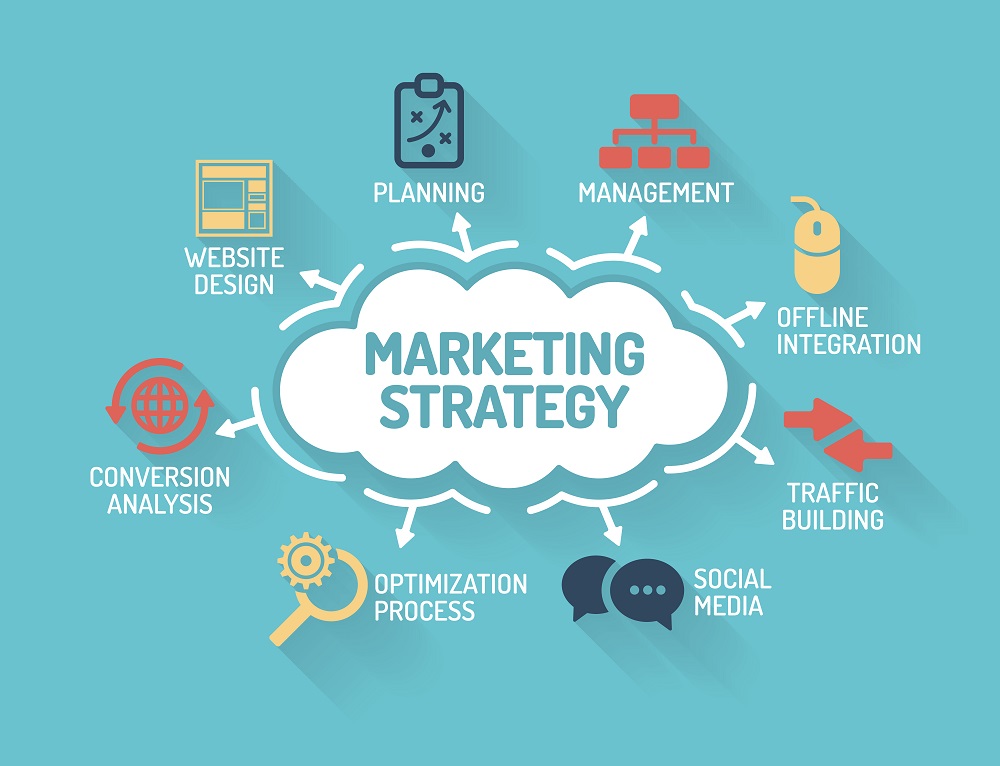
There are so many channels to digital marketing and even more ways to combine them. The domain provides a wealth of opportunity to businesses, but also a classic predicament.
Which channels are right for your business, and how do you best leverage them to produce success?
Finding the right mix of channels to serve the needs and goals of your business starts with an understanding of the tools available to you.
From there, you can approach the task of blending them to develop a strategy custom-made to address the needs and realise the goals of your business.
In this article, we’ll equip you with the information you need to know about each digital marketing channel. With these basics under your belt, you’ll have what you need to follow along with our next article, and start the task of mixing the channels right for you to construct an effective digital marketing strategy.

Content Marketing
Content Marketing costs 62% less than outbound marketing but generates more than three times the leads.
90% of marketers today use content marketing in their marketing strategies.
Content Marketing adopters enjoy an average conversion rate that is six times higher than non-adopters.
Why Content Dominates Marketing in 2017
Advertisements have never been something that audiences have enjoyed. We don’t consume ads on TV, radio, magazines, etc. because we want to, but because they interrupt the content we’re actually interested in. If watching the ad is easier than changing the channel, we’ll watch the ad.
Technology has progressed (and will keep progressing) to provide us easier and easier ways to avoid the inconvenience of advertisements. The remote made it easier to change channels. The PVR made it possible to skip them. Our devices allowed us to play all our music ad free.
Today, 200 million people worldwide have installed ad-blockers on their devices.
Content Marketing has come to dominate the digital space because it is designed around connecting audiences with what they’ve always wanted to connect with.
Value.
By providing legitimately relevant and useful insight to prospects and customers, marketers make their content the content that audiences want to consume; and enjoy massive success because of it.
How To Get Started Content Marketing
 Content marketing leaders enjoy an annual rate of growth to site traffic that is 7.8x higher than non-leaders.
Content marketing leaders enjoy an annual rate of growth to site traffic that is 7.8x higher than non-leaders.
For those not in a position to establish a position of content leadership, even small efforts, done properly, are almost guaranteed to provide a significant return.
No matter your situation, the only way to ensure content success is with a properly thought out strategy and plan.
To find out how to establish a content strategy and plan to meet the needs of your business, you can refer to our 7 step guide on how to do so.
Social Media
95% of 18-34 year olds, and 92% of 35-44 year olds are most likely to follow a brand via social networking. (MarketingSherpa)
71% of consumers who have a positive experience with a brand via social media are likely to recommend it to others (Ambassador)
In 2015, Facebook influenced 52% of consumer purchases, online and offline, up from 36% in 2014 (TheDrum)
Why Social Media Works For Business
While ‘social media’ is a term barely a decade old, the fact that every major brand on earth uses it makes it difficult to imagine a marketing world where Facebook, Instagram, and Linkedin aren’t ubiquitous words.
Social Media has enjoyed such a meteoric success in marketing for a simple reason. It allows consumers to interact with business the way we’ve always wanted to.
Personally.
Before the industrial age, we would get to know and interact with the people responsible for all the products in our lives.
Oats came from the miller, and when we went to buy them, we would see his face, know his name, engage in conversation, and establish trust.
With the industrial revolution, the factory made our oats. We enjoyed our new oats (and new prices) but missed the personal connection that once underlied all our purchases.
 Businesses manufactured identities as stand-ins to replace this connection known as ‘Brands’. We couldn’t buy from the oat-maker anymore, but the friendly man with a funny hat on the box rekindled some of that age-old connection.
Businesses manufactured identities as stand-ins to replace this connection known as ‘Brands’. We couldn’t buy from the oat-maker anymore, but the friendly man with a funny hat on the box rekindled some of that age-old connection.
Social Media takes things one step further. Social has added a crucial layer to our experience with brands by allowing us to engage in conversation.
Being able to ask questions, and get answers solidifies powerful, personal relationships between people and brands. The simple act of conversation is a powerful tool to establish trust, and trust is a valuable thing for consumers and brands alike.
How To Make Social Media Work For Your Business
Social, like content, can be a highly effective marketing tool if it’s used right. Adding another communication channel to connect you with your market has tremendous value, but only if it’s used to enhance your customer experience.
Social Media is always-on, like a phone that can’t be hung up. When customers and prospects speak into their end to find that nobody is listening, you don’t only lose the opportunity to create a powerful and long-lasting customer relationship; you send it to your competition!
This is why brands that do social well have real-time social experts in place, ready to answer questions right away. With a knowledgeable, competent person in place to monitor social accounts and search for
With a knowledgeable, competent person in place to monitor social accounts and search for conversation on problems that your products and services can solve, your brand will grow a community of loyal customers that will generate value for years to come.
E-Mail Marketing
With the tools available today to automate emails, it’s harder to justify why you shouldn’t be Email marketing than why you should.
 The primary benefit of email marketing over channels like social is the direct nature of communication.
The primary benefit of email marketing over channels like social is the direct nature of communication.
Posting to Facebook, Twitter, and Instagram gets your content onto the feeds of your audience; but those platforms make it very easy to mindlessly skip content. The further your post goes down a feed, the less likely it is to be viewed.
An inbox, on the other hand, presents all content on an equal playing field. So long as your titles and subject lines attract interest, you can expect your content to compete on an equal playing field with other emails.
More than this, Email provides fewer restrictions on the information you can send to your audience. Unrestricted to 140 character limits or 10-second Snapchats, marketers have more freedom to craft and deploy content.
Getting Started With Email Marketing
Email marketing requires you to capture email addresses, and use them to deploy targeted marketing material.
One of the most powerful (and free!) tools you can use to capture email addresses is Hubspot Marketing Free. Installing this onto your website allows visitors to provide emails, but more importantly, automatically retrieves important information about potential leads that you can use to craft marketing material.
To take the work out of crafting and sending emails, it’s recommended to use an email marketing suite like MailChimp or one of its many alternatives.
SEO
SEO is the grand-daddy of digital marketing, one of the first concrete disciplines to emerge with the popularisation of the internet.
When it comes to SEO, there are two approaches you ought to be aware of:
Slow-And-Steady: Organic SEO
Organic SEO is the work required to bring ‘organic’ or unpaid search traffic to your website.
 Google searching is a fundamental part of everyday life. So many of the decisions we make day-to-day, especially when it comes to our purchases, start and end with search.
Google searching is a fundamental part of everyday life. So many of the decisions we make day-to-day, especially when it comes to our purchases, start and end with search.
From little things like where we can find decent fast-food, to big things like where to find the best rate on a mortgage, we rely on and trust Google to be a fountain of knowledge.
Having a strong search ranking positions your business as Googles trusted source on information concerning the problems customers have that your products and services solve. The value of earning this position should not be understated.
Fast-And-Ready: PPC
Earning a strong ranking takes time and investment. To bridge the gap, all search engines offer businesses the opportunity to present themselves at the top of search results for a fee. This is known as PPC, or pay-per-click.
PPC is a quick and easy way to generate incredible traffic. Guaranteeing R.O.I is a matter of approaching PPC as a part of a greater digital marketing strategy and ensuring consistent monitoring of your campaigns.
So long as your website converts well, and keywords are strategically chosen, the traffic PPC campaigns are capable of producing can generate significant value while you wait for organic SEO to kick in!
Defining the Marketing Mix That’s Right For You
 Every business is different, and so there is no one-size-fits-all digital marketing strategy sure to meet the needs of all of them.
Every business is different, and so there is no one-size-fits-all digital marketing strategy sure to meet the needs of all of them.
Now that you’ve gained a broad understanding of the approaches to digital marketing available to your business, be sure to check back to the WebMarketers blog tomorrow for our guide to picking the combination best for your business!



